Champions of Change Blog
The Value of Engaging Volunteers in Preparedness Partnerships
Posted by on October 17, 2013 at 1:58 PM EDT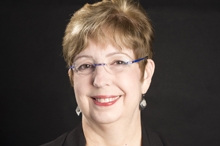
Linda was recognized as a White House Champion of Change in Community Resilience and Preparedness.
September 11, 2001 had a profound effect on our country, and the events of that day were shocking and horrific. Four years later, we had another shock as a nation – the devastation and impact of Hurricane Katrina. While time heals many wounds, the impacts on our lives of events like these can be both diverse and unanticipated. They can also result in important, positive changes to our nation, our cities and towns, and to us, and developing effective partnerships is a key building block to realizing necessary changes.
After seeing these events unfold, I decided that it was important for me to help make our community better prepared for disasters and emergencies. In 2007, I decided to follow my heart and leave a 25-year career in public sector environmental policy and planning to begin working in community preparedness, first as a public health preparedness planner and finally as Community Preparedness Program Manager/CERT Program Manager at the City of Austin’s Office of Homeland Security and Emergency Management.
I became a part of the community that works hard to provide critical information to help citizens prepare for and take steps to protect themselves from the impacts of pandemics, tornados, floods, and other disasters. Despite these efforts, however, the level of public awareness and preparedness for these threats is often very low, especially in communities that have not been impacted by a major emergency or disaster. Citizens who believe “it won’t happen to me, it won’t happen here, and it won’t happen today” present one of the biggest challenges to preparedness efforts everywhere.
Local Community Emergency Response Team (CERT) programs are important catalysts for this challenge. Trained members not only learn how to help out their neighbors and their community in emergencies, they also share what they learn with their friends, families, and neighbors. This simple step helps shift the balance toward improved community preparedness.
We are proud that Austin’s CERT volunteers worked in evacuee shelters during Hurricane Ike, helped staff the City’s Emergency Operations Center during a significant ice storm, helped provide firefighter rehab during major wildfires, and were involved in other critical response activities. But what about the in between times when no emergencies or disasters are happening? We focused on forging new partnerships so our CERT members had more meaningful opportunities to better support our community during times of no disasters.
The result: our CERT program now includes a team of members trained by the City’s Water Utility to conduct informal site inspections for safety concerns and suspicious activities at pump stations and reservoirs. Another team has accompanied city Fire Department personnel on smoke alarm canvassing events conducted in neighborhoods where a fire death has occurred. They help install free smoke alarms and/or batteries to assure those neighborhoods are better prepared for fire threats. Some CERT members have been trained to conduct one-hour personal preparedness modules upon request by neighborhood groups, businesses and others across the community. Another team has been trained to help staff the State Operations Center when major disasters occur outside of the Austin area. These partnerships have provided valuable opportunities for our CERT members to get advanced training, to support other important preparedness and response activities, and to stay engaged.
Linda Haynie recently retired from the City of Austin, where she worked as Community Preparedness Program Manager and CERT Program Manager for the City’s Office of Homeland Security and Emergency Management.
Learn more aboutEmpowering Resiliency Begins with Change and Working Together
Posted by on October 17, 2013 at 1:55 PM EDT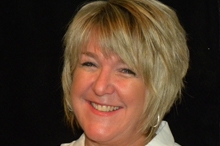
Gail was recognized as a White House Champion of Change in Community Resilience and Preparedness.
I am honored to have been chosen as a White House Champion of Change. However, this honor needs to be shared with the many dedicated and amazing individuals I work with each and every day. Our work is a team effort.
I believe change is the power to resiliency. My passion is to help change the way our communities think about preparedness in order to motivate them become a resilient community.
Hurricane Sandy forced our community to recognize that they need to be better prepared. The better prepared a person, family, or organization is, the better they will recover after a disaster occurs.
Empowering communities to become resilient requires change, working together and developing a relationship with our partners. Our goal is to help create a healthy, safe, and prepared community for all of our residents.
A comprehensive education program has been developed to strengthen the community to think critically, take action and problem solve. The program includes training residents of the communities to prepare, respond, and recover by working together with local and government officials. This action will create the community’s ability to coordinate emergency services, assistance and care. The impact of this project is to create a self-sufficient community that can be ready and withstand the initial impact of a disaster.
In addition, the program includes individual preparedness workshops for youth, adults and seniors. The “Kids Home Alone Emergency Preparedness Workshop” was developed by a team of Red Cross volunteers and received the Federal Emergency Management Agency 2012 Individual and Community Preparedness Award for the efforts to make communities safer, stronger and better prepared for any disaster or emergency. Many youth in our community are home alone for long periods of time as parents are working longer hours and/or several jobs. The goal is for our youth to leave these interactive and educational workshops feeling confident that they can handle disasters and emergencies to the best of their ability and with the knowledge of safety prevention. I strongly believe becoming resilient begins with our youth.
I have been extremely fortunate and thankful to work with such a compassionate and dedicated group of Red Cross volunteers and community partners to implement these programs. Thanks to these individuals and our funding partners we are able to provide these programs for the communities in Northeast PA Region of the American Red Cross.
Gail Toscano is the Preparedness and Resiliency Manager for the American Red Cross Northeast PA Region.
Learn more aboutCelebrating Everyday Heroism in our Diverse Communities
Posted by on October 17, 2013 at 1:52 PM EDT
Emily was recognized as a White House Champion of Change in Community Resilience and Preparedness.
After nearly a decade with the American Red Cross, I’ve witnessed how communities respond to and recover from disasters of all kinds. I’ve seen ordinary people perform extraordinary acts of heroism and selflessness and realized how much we rely on each other when disaster strikes. Although emergency personnel deploy immediately after a disaster and humanitarian organizations like the Red Cross and the Salvation Army serve the community until the last disaster-related needs are met, our agencies simply cannot be everywhere at once. Every one of us, the ordinary people who live and work together and form the fabric of our communities, has the ability and the responsibility to take care of one another when disaster hits home.
My mission is to prepare as many people as possible with the skills and resources necessary to become those powerful yet humble heroes who can help when a disaster strikes their family, workplace, or community. Recognizing that neighbors are the true “first responders” in any crisis, the Red Cross Gateway to the Golden State Region launched Ready Neighborhoods, a four-year initiative designed to transform 50 targeted neighborhoods into models of disaster readiness. This collaborative effort is led by local individuals and organizations within each community and is facilitated by the Red Cross and sponsored by Pacific Gas and Electric Company.
Ready Neighborhoods programming empowers local residents and organizations with the skills and tools they need now—before disaster strikes—to effectively respond when the time comes. Resources are focused on low-income, immigrant, and underserved communities that are most adversely affected by disasters and face the hardest road to recovery. The programming utilizes the Red Cross Community Resilience Strategy, a framework that involves all sectors of the community to build relationships and trust and leverages local assets to promote preparedness and resilience in a culturally appropriate way.
The youth are also vital and will conduct neighborhood assessments using the “Map your Block” tool supported by our partners at San Francisco Department of Emergency Management, Neighborhood Emergency Response Team, and SF SAFE. At Save-a-Life Saturday, youth volunteers also teach lifesaving skills to hundreds of community residents.
Since the launch of Ready Neighborhoods, the Red Cross has trained nearly 50,000 individuals in 16 neighborhoods through a team of volunteers teaching in Cantonese, English, Mandarin, Spanish, Tagalog, and Vietnamese. More than 500 residents are now prepared to open and operate community shelters. Together with our partners we are increasing the resilience of our communities, and everyday people—our neighbors, friends, colleagues, and families—are honing their own preparedness superpowers to become the next everyday heroes.
Emily White is the Regional Director of Preparedness for the American Red Cross Gateway to the Golden State Region headquartered in San Francisco.
Learn more aboutIncreasing Public Safety: Sharing Information the Public Wants, the Way They Want it
Posted by on October 17, 2013 at 1:49 PM EDT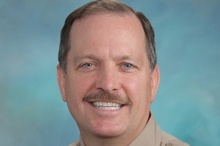
Michael was recognized as a White House Champion of Change in Community Resilience and Preparedness.
Many of us enter policing thinking the profession is all about enforcing the law. But by handling thousands of arrests and seeing the jails fill, one's perspective evolves. For me, preventing crime before it happens, building public trust, and reducing unnecessary fear have become the most rewarding successes.
New eCommunications systems have brought dramatic changes to the public. They quickly adopted these new technologies and have invited the government to be a part of the socialmedia program. Although the new systems presented great opportunities for law enforcement and emergency services, many felt it was too difficult, a fad, or that we needed to first develop a thick handbook of rules. Chief executives successful in eCommunications either empower a “knowledge-worker” to lead, or a few lead it themselves. Nationally, examples of excellence and innovations in eCommunications range from the Federal Emergency Management Agency to the American Red Cross and the International Association of Chiefs of Police Center for Social Media. In 2009, Sheriff Leroy D. Baca empowered me to lead.
The Los Angeles County Sheriff’s Department (LASD) has worked to become online partners with the County’s 10 million residents, other policing and firefighting agencies, and emergency services. The LASD website was redesigned with LASD Nixle text and email messaging, as well as Twitter, Facebook, YouTube, and Pinterest pages which were successfully implemented. Because people, especially generationally, want information differently, over 100 LASD community-specific and topic-specific accounts were activated to complement LASD Headquarters messaging.
By working with the public – news media and emergency services agencies to use these systems for routine messaging and coordinating localized crises – we are also training ourselves for the inevitable bigger crises to come.
To help make multi-agency participation easier, I have been awarded the privilege to make presentations to thousands of first responders at over 50 major conferences. Meanwhile, we have provided 8-16 hours of formal training to over 1000 personnel from 150 agencies, including five foreign countries. We accomplished this by working through the newly formed Electronic Communications Triage Unit of Sheriff's Headquarters Bureau (SHB eComm), California Peace Officers Association, and Peace Officers Association of Los Angeles County. Through training and joint handling of actual incidents (eMutual Aid), we are an increasingly cohesive multi-agency crisis management team, with the public as key team members.
These new ways to communicate and coordinate directly with the public were impossible just a few years ago. Yet now they seem to be everywhere. By engaging the community, we are increasing public safety, preventing and solving crimes, and reducing fear. Alongside many excellent leaders, I am proud to be a part of the change and the solution.
Captain Mike Parker is the lead Public Information Officer and Unit Commander of Sheriff’s Headquarters Bureau of the Los Angeles County Sheriff’s Department.
Learn more aboutCERT and Community Caring
Posted by on October 17, 2013 at 1:46 PM EDT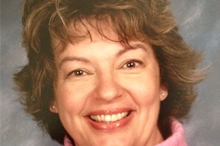
Colleen was recognized as a White House Champion of Change in Community Resilience and Preparedness.
My name is Colleen Adler and I am honored to be a White House Champion of Change. It is an important recognition that I share with West Pierce Fire & Rescue and all the CERT members that make our program a success.
I am the Emergency Preparedness Coordinator for West Pierce Fire & Rescue (WPFR) in Washington State. The West Pierce Fire & Rescue CERT program was established in 2008 after the Fire Chief asked if I would be willing to take on this project. At the time, I was working in the 911 center and was excited at the prospect of engaging with citizens prior to an emergency rather than in the midst of one. The program aimed to develop a cadre of skilled community members who would be an asset to the fire district during emergency situations.
I was fortunate to have a few months to investigate other CERT programs and research best practices for engaging citizens. Since I was building our program from scratch I was able to decide which criteria were most important for a successful program. My primary goal was to collaborate with citizens so everyone would view themselves as a stakeholder in the program. In order to achieve this it was important each person felt they were respected and had a role to play in CERT. The best way to show respect is to know the names of the participants and recognize their individual skill set andsince our program has grown to over 400 trained CERT members, this has been a challenge, but one I continue to strive to achieve.
Our program continues to grow due to the support of the fire district and the trained CERT members. A key reason for success is the fire-based instructors who are engaging and respectful. Honoring the efforts of citizens who have busy lives, our instructors shared information with them in a conversational method rather than provide data in a strictly instructional method. The CERT members who complete training are charged with spreading the word as ambassadors of the program. Standout members who have enthusiasm and time are encouraged to become CERT Team Leaders and Advisors, continuing the policy of citizen ownership. We have also been fortunate to have an AmeriCorps volunteer each year since 2009. These volunteers provide essential outreach to our diverse population and are critical to the success of the program.
With the help of CERT Citizen Advisors, the WPFR CERT team developed a platform to not only recruit and train members, but also to create a program that will engage and empower the whole community by bringing together a diverse population with a similar goal: caring for each other and their community in a time of need. As a result of providing ownership of the program to the members, we have been able to reach a variety of people. Among West Pierce CERT members there are: members of the military and military veterans, people with disabilities, unemployed individuals, people who speak English as a second language, city hall employees, social workers, city council members, church clergy, nurses, college students, teachers, retired first responders, insurance agents, business owners, truck drivers, marine biologists, bakers, and the list goes on. These members create a network comprised of individuals representing partnerships with organizations, businesses, and the public all over Lakewood and University Place.
Colleen Adler is the Emergency Preparedness Coordinator for West Pierce Fire & Rescue in Washington State.
Learn more aboutStronger, Safer, and More Resilient: The Impact of Community Involvement
Posted by on October 17, 2013 at 1:43 PM EDT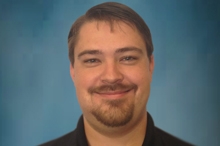
Boyce was recognized as a White House Champion of Change in Community Resilience and Preparedness.
Some may ask how servitude and leadership within the community make it stronger, safer, and more resilient. In order to lead, one must first be willing to serve. He or she must be willing to serve the needs, both spoken and unspoken, of the community and others. It is through this approach that leadership transitions toward improving the foundation of the community: its members. This concept is one that I was exposed to early in my career and it has continued to impact how I interact with my community.
In 2006, I became an emergency medical technician for a rural provider in Central Texas. During my training, Paramedic Joe Alvarez, who later became my mentor, cheered the use of “teachable moments” to encourage patients to live in a healthier and safer manner. According to Joe, these moments arise because there is a lack of knowledge that has resulted in a negative consequence for the patients. It is during these times that we are provided an opportunity to correct the lack of knowledge and encourage positive circumstances in the future. At that point, the light came on. If an effort is made when the opportunity arises, a simple statement could make a major difference for an individual. For several years, I enjoyed capturing opportunities to educate others as those “teachable moments” arose.
In late 2007, I joined the Heart of Texas Council of Governments as an emergency preparedness planner. Since that time, I have had the opportunity to work alongside some of the brightest minds to develop plans that address preparedness, response, recovery, and mitigation of hazards and threats that our 6-county region faces. I have also had the opportunity to serve as the regional coordinator for Citizen Corps Program initiatives within the region. I have worked to establish and facilitate the development of 21 different Citizen Corps initiatives within the rural 5,611 square mile area. These programs epitomize the mission of Citizen Corps, which is to “harness the power of every individual through education, training, and volunteer service to make communities safer, stronger, and better prepared to respond to the threats of terrorism, crime, public health issues, and disasters of all kinds.”
Most recently, the true impact of servitude and leadership was demonstrated during the response to the West Texas fertilizer plant explosion on April 17, 2013. Immediately following the explosion, Citizen Corps volunteers from 10 of the 21 programs found themselves working to meet the otherwise unmet needs of the citizens of West. Four of the teams provided on-site assistance to responders, volunteers, and victims in the forms of rehabilitation, disaster psychology, and resource accountability. The remaining six teams coordinated fundraising and donation drives to meet the growing demands for victim funds, blood for injured victims, and clothing for impacted families.
Regardless of one’s desire to lead, the importance of servitude must not be underestimated. It is through the desire to serve and the subsequent opportunities to lead through serving others that stronger, safer, and more resilient communities have become a reality within the 6-county Heart of Texas Council of Governments region. By serving the needs of the community, we also encourage members within the community to take a leadership role in serving others. It is through serving, leading, and encouraging that we truly make a difference within the community.
Boyce Wilson is an emergency preparedness planner at the Heart of Texas Council of Governments.
Learn more about
- &lsaquo previous
- …
- 38
- 39
- 40
- 41
- 42
- 43
- 44
- 45
- 46
- …
- next &rsaquo
White House Blogs
- The White House Blog
- Middle Class Task Force
- Council of Economic Advisers
- Council on Environmental Quality
- Council on Women and Girls
- Office of Intergovernmental Affairs
- Office of Management and Budget
- Office of Public Engagement
- Office of Science & Tech Policy
- Office of Urban Affairs
- Open Government
- Faith and Neighborhood Partnerships
- Social Innovation and Civic Participation
- US Trade Representative
- Office National Drug Control Policy
categories
- AIDS Policy
- Alaska
- Blueprint for an America Built to Last
- Budget
- Civil Rights
- Defense
- Disabilities
- Economy
- Education
- Energy and Environment
- Equal Pay
- Ethics
- Faith Based
- Fiscal Responsibility
- Foreign Policy
- Grab Bag
- Health Care
- Homeland Security
- Immigration
- Innovation Fellows
- Inside the White House
- Middle Class Security
- Open Government
- Poverty
- Rural
- Seniors and Social Security
- Service
- Social Innovation
- State of the Union
- Taxes
- Technology
- Urban Policy
- Veterans
- Violence Prevention
- White House Internships
- Women
- Working Families
- Additional Issues

